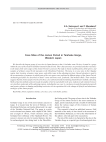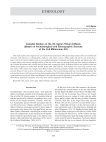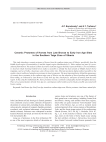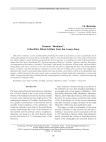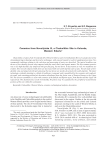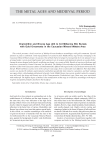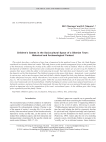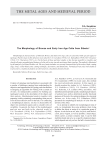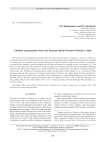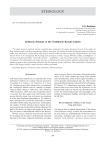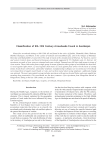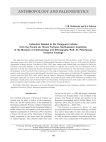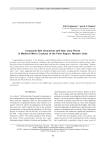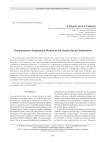Archaeology, Ethnology & Anthropology of Eurasia @journal-aeae-en
Статьи журнала - Archaeology, Ethnology & Anthropology of Eurasia
Все статьи: 524
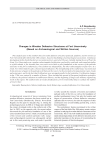
Статья научная
This study focuses on the southern line of wooden defensive structures (palisade, platform, and two towers) at Fort Umrevinsky (first third of the 18th century), based on the findings of archaeological excavations. Continuous development in this borderline fort are reconstructed over a period of 30 years. Initially, during the era of Peter the Great, Fort Umrevinsky was a regular, subrectangular fortification, enclosed by a palisade, and somewhat similar to a field redoubt. A few decades later, two towers were built on pile foundations at the corners of the palisade enclosure on the fort’s southern face. One of them was subquadratic, the other subrectangular in plan view. As a result, Fort Umrevinsky became a bastion-type fortification. The strengthening of the southern face was motivated by the presence of gates in the palisade wall between the towers, by the proximity of transportation routes (roads and waterways), and by the fact that fortifications were arranged parallel to the borderline. Fortification changes in the 1730s were caused by a number of factors. These included the spread of European fortification principles to Siberia, the political situation in southwestern Siberia, and the beginning of large-scale military engineering works in the region. The southern line of wooden fortifications at Fort Umrevinsky helps to estimate the number of towers there.
Бесплатно

Chinese coins from the early medieval cemetery Gorny-10, Northern Altai
Статья научная
We describe a representative series of Chinese coins found during the excavations at Gorny-10, carried out by expeditions from Altai State University in 2000–2003. The coins were found in eight burials (No. 6, 18, 44–46, 48, 62, 66). Because of its composition and diversity, the sample is unusual for North and Inner Asia. It includes 29 specimens, relating to various groups. Apart from coins of the Wǔ-zhū and Kāi-yuán Tōng-bǎo types, which are rather common outside China, there are very rare ones belonging to the Cháng-píng Wǔ-zhū and Wǔ-xíng Dà-bù categories. A numismatic analysis allowed us to date separate burials and the entire cemetery. The lower date of most burials (No. 6, 45, 46, 48, 62, 66) cannot be earlier than AD 581, as evidenced by Sui coins of the Wǔ-zhū type. Burials 18 and 41, where Kāi-yuán Tōng-bǎo coins were found, are later than the 630s. In view of additional data (absence of late issues of Kāi-yuán Tōng-bǎo coins, and results of radiocarbon analysis), burials at Gorny-10 date to late 6th and 7th centuries. Notably, coins were found only in burials of women and children. Their locations suggest that they had been used as head ornaments and parts of belt sets, as well as pendants and amulets.
Бесплатно
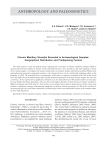
Статья научная
The study explores social and climatic factors affecting the occurrence of chronic maxillary sinusitis (CMS) in ancient and historical samples of Europe, North and South America, Asia, and Africa. The main database consists of 23 cranial samples. According to the results of univariate (correlation analysis and Wilcoxon-Mann-Whitney test) and multivariate (principal component) analyses, only climatic factors reveal a statistically significant effect on the frequency of CMS. The principal factor is temperature, which shows a negative correlation with CMS at the world level: the higher the mean annual temperature and the maximal temperature of the three hottest months, the lower the occurrence. At the regional level, significant correlation was also found between CMS and the number of rainy days per year. Rather than direct dependence, however, this result suggests that the correlation between climatic variables is different in Europe and North America. None of the socio-economic factors that we analyzed (sex, urban versus rural residence, subsistence strategy) demonstrated significant correlation with the prevalence of CMS at the world level. Assessing the effect of social status evaluated by archaeological criteria was impossible because of the complex nature of stress-inducing factors.
Бесплатно
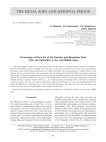
Статья научная
This study attempts to elaborate a chronology of rock art in the Russian and Mongolian part of the Altai Mountains, from the Paleolithic to the Late Middle Ages. We focus on the style and themes of rock art and on petroglyphic palimpsests. The earliest representations date to the Upper Paleolithic. On certain palimpsests, images of horses in the Kalguty style are overlaid by Bronze Age petroglyphs. The key challenge is to identify Neolithic petroglyphs. Among the huge number of Bronze Age representations, some follow the traditions peculiar to the Afanasyevo and Chemurchek cultures. The key feature of the latter is so-called “Chemurchek anthropomorphs”. Bronze Age petroglyphs, representing animals, humans, weapons, wheeled vehicles, etc., are chronologically and culturally diverse and must be subdivided respectively. Early Iron Age ones require attribution to either the initial stage or to the mid-1st millennium BC. We discuss the difficulties of analyzing rock art of the Xiongnu-Sarmatian age, the expressive Turkic style, that of the early medieval rock art, and recent petroglyphs of the southern Russian Altai.
Бесплатно
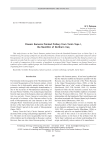
Classic Samarra painted pottery from Yarim Tepe I, the Neolithic of Northern Iraq
Статья научная
This study focuses on the Classic Samarra painted ware from the Standard Hassuna layer at Yarim Tepe I, in Northern Iraq. Two groups of imports are described. The first consists of Classic Samarra, apparently related to Central Mesopotamia; the second, of Samarra Ware imported from the west. It is hypothesized that the Samarra pottery was imported not only from the center to various parts of the periphery, but also from one part of the periphery to another. As a result of comparison of the ceramics, a hypothesis is proposed that Classic Samarra was formed based on a symbiosis of two earlier cultural groups: the Proto-Hassuna period in Northern Mesopotamia, and Neolithic traditions originating from Central Zagros.
Бесплатно

Comparative characteristics of stone tools from the Neolithic sites on the Upper and Middle Kama
Статья
Бесплатно

